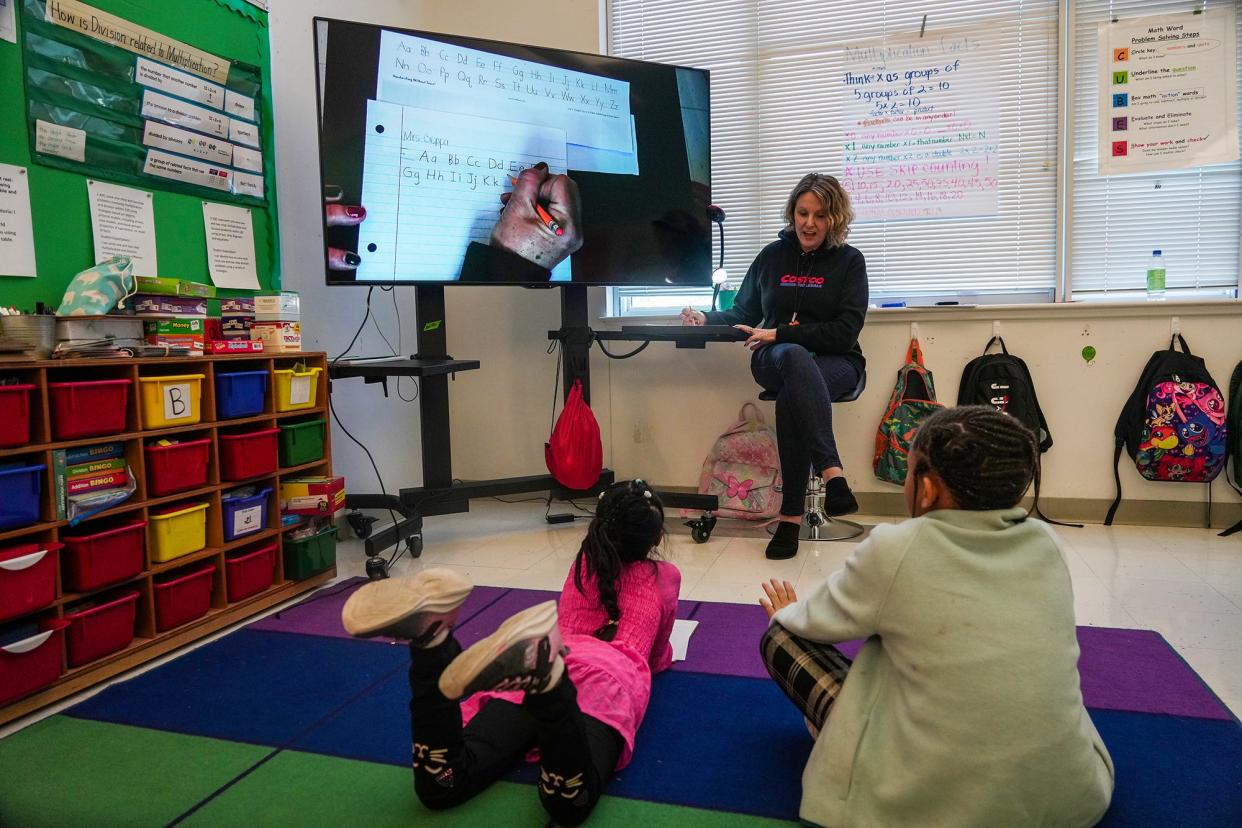Nonprofit: Pandemic-related learning disruptions still affecting Texas student outcomes

Years after the COVID-19 pandemic disrupted learning at Texas schools, the wide-reaching effects are still depressing students' scores and creating learning challenges statewide, according to recently released data by Children at Risk, a research and advocacy nonprofit dedicated to addressing child poverty and inequality.
The nonprofit's data point to the long-term need for programming to help students close achievement gaps, education experts said. Children at Risk ranks Texas schools on performance, achievement and growth, among other things.
For the past few years, the schools' scores have reflected the lingering challenges caused by time away from in-person instruction during the pandemic, said Robert Sanborn, president and CEO of Children at Risk.
“This is sort of a red flag for the state to pay more attention,” Sanborn said, adding that it’s clear Texas should be spending more time and money on public education.
“With our schoolchildren, we can’t just get back to normal,” he said.
Sanborn also worries that low-income students are those most likely to be left behind.
While some school administrators argue that letter-based grades don’t paint the whole picture of a campus's progress, Sanborn said the data provide important insights into long-term education trends statewide.
The post-COVID trend reflected in the nonprofit’s scores is similar to patterns revealed in the state-assessed scores.
More: Austin student STAAR scores remain steady; some pandemic effects linger
The Texas Education Agency found that students taking the State of Texas Assessments of Academic Readiness, or STAAR, test did worse last year in every subject except reading compared with 2019, despite climbing up from pandemic lows in 2021.
Before the pandemic, 50% of students in third through eighth grade met grade-level expectations in math. In 2023, only 43% met grade level, a rise from 35% in 2021, according to TEA data.
A smaller percentage of students also met grade-level standards on the STAAR tests for Algebra I, biology and U.S. history in 2023 than they did in 2019.
Students, however, did improve on reading tests.
After a pandemic dip, 52% of third through eighth grade students in 2023 were at grade level for reading, compared with 47% in 2019.
High school students taking English tests also showed gains.
Locally, the Ann Richards School for Young Women Leaders in Austin tops the list of high-performing schools, followed by Colorado River Collegiate Academy in the Bastrop district and the Liberal Arts and Science Academy in Austin.
Austin-area schools tend to benefit from families earning higher average incomes than in other urban areas, Sanborn said.
About 51.9% of Austin district students are economically disadvantaged, compared with 79.2% in Houston, 85.4% in Fort Worth and 89.4% in Dallas.
One positive trend is that Austin-area schools tend to do a good job preparing students for college readiness, said Leila Mzali, director of the Center for Social Measurement and Evaluation at Children at Risk.
“In terms of college readiness, Central Texas is really shining,” Mzali said. “That is a little bit of a silver lining.”
To alleviate the pandemic's lingering academic effects, lawmakers and educators should implement more strategies to help students catch up, such as tutoring, providing summer programs and retaining teachers, Sanborn said.
What are the Austin area's top performing schools?
Ann Richards School for Young Women Leaders, Austin district, A
Colorado River Collegiate Academy, Bastrop district, A-
Liberal Arts and Science Academy, Austin district, A-
NYOS Charter School, B+
Westwood High School, Round Rock district, B
Jack C Hays High School, Hays district, B
McCallum High School, Austin district, B
Meridian World School, B
Thrall High School, Thrall district, B
Harmony Science Academy, Pflugerville, B-
This article originally appeared on Austin American-Statesman: Nonprofit: Texas student scores still affected by pandemic challenges

